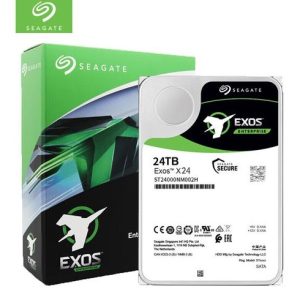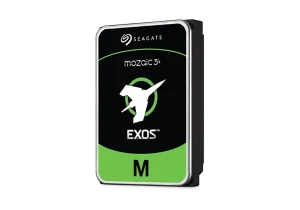As global demand for reliable bulk storage grows, understanding the nuances between Seagate enterprise HDDs ranging from 4TB to 8TB becomes crucial for procurement decisions. Latest market data shows enterprise-grade drives in this capacity range accounted for 42% of global HDD shipments in Q2 2025. Let’s examine what makes each model unique and how to select the optimal solution for your specific requirements.
Comparing Seagate’s 4TB to 8TB Enterprise HDD Series
The Seagate Exos X18 (8TB) and Exos 7E8 (4TB) represent two distinct approaches to enterprise storage. The X18 series utilizes 9-platter Helium technology with a 7200 RPM spindle speed, delivering 255MB/s sustained transfer rates – ideal for data center workloads requiring maximum throughput. Meanwhile, the 7E8 series employs conventional air-filled design at 5400 RPM with 190MB/s transfer speeds, better suited for archive storage where power efficiency matters more than raw performance. Both feature 128MB cache buffers and support TCG encryption standards.
Key selection criteria:
- Workload Rating: X18 handles 550TB/year workload vs 7E8’s 180TB/year
- Power Consumption: 7E8 averages 5.3W idle vs X18’s 6.8W
- Acoustics: 7E8 operates at 2.7 bels vs X18’s 3.2 bels
Current wholesale pricing (Q3 2025) shows the 8TB model at $189-$215/unit for 500+ quantities, while 4TB units range $98-$112.
Enterprise HDD Lifespan: How to Maximize Your Investment
Based on Backblaze’s 2025 Q1 reliability report, properly maintained Seagate enterprise drives achieve 98.6% survival rate at 50,000 power-on hours. To extend operational life:
Environmental Controls:
- Maintain 25°C-30°C operating temperature with <60% humidity
- Install in vibration-dampened racks (max 0.21G vibration tolerance)
- Implement proper airflow (minimum 200 LFM across drive bays)
Operational Best Practices:
- Limit cold starts to <5 cycles per 24-hour period
- Schedule surface scans quarterly using SeaTools Enterprise+
- Rotate drives in RAID arrays every 12-18 months
Recent firmware updates (X18 vSN04) have improved load/unload cycle ratings to 600,000 cycles, 15% higher than previous generations.
Migrating from 4TB to 8TB: Compatibility Considerations
Infrastructure upgrades require careful planning to avoid downtime. When transitioning existing arrays:
Backplane Compatibility: Check your server’s HBA specifications – most modern controllers (LSI 9400-16i and later) support 8TB+ drives natively. For older 6Gbps SAS systems, a firmware update may be required.
RAID Rebuild Strategies:
- Phase in new drives using RAID migration features (e.g., Dell’s PERC Virtual Disk Expansion)
- Prioritize rebuilds during off-peak hours (8TB rebuilds take ~18 hours at 150MB/s)
- Verify consistency checks afterward with mdadm –scrub or equivalent tools
Major cloud providers have reported 28% reduction in storage TCO when upgrading from 4TB to 8TB arrays, despite the higher per-unit cost.
When sourcing Seagate enterprise drives, HUAYI INTERNATIONAL LIMITED provides distinct advantages as an authorized global distributor. Our direct partnership with Seagate ensures genuine products with full manufacturer warranties (3-5 years depending on model). We maintain regional stockpiles across three continents for same-day shipping availability, with dedicated technical support teams versed in enterprise storage architectures. Bulk buyers benefit from our flexible financing options and volume pricing tiers, along with secure LC payment terms for international transactions.



